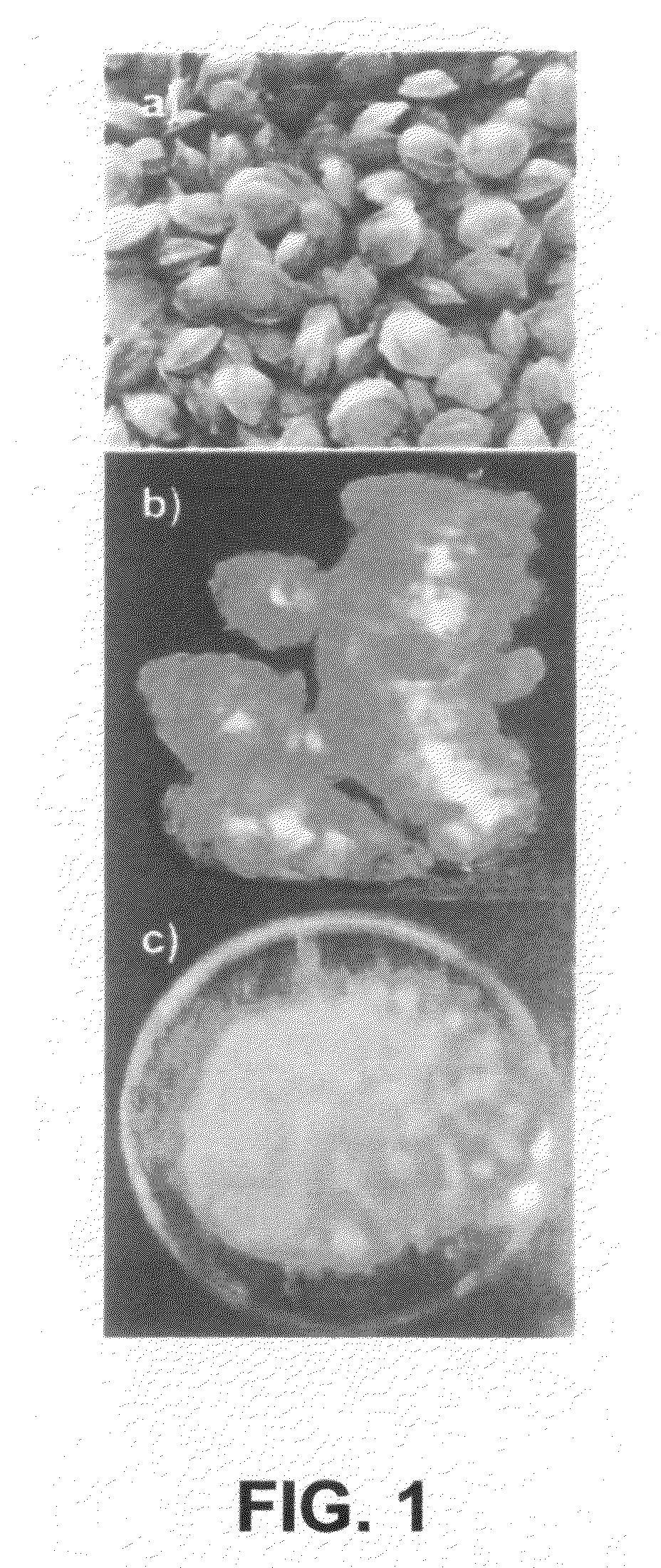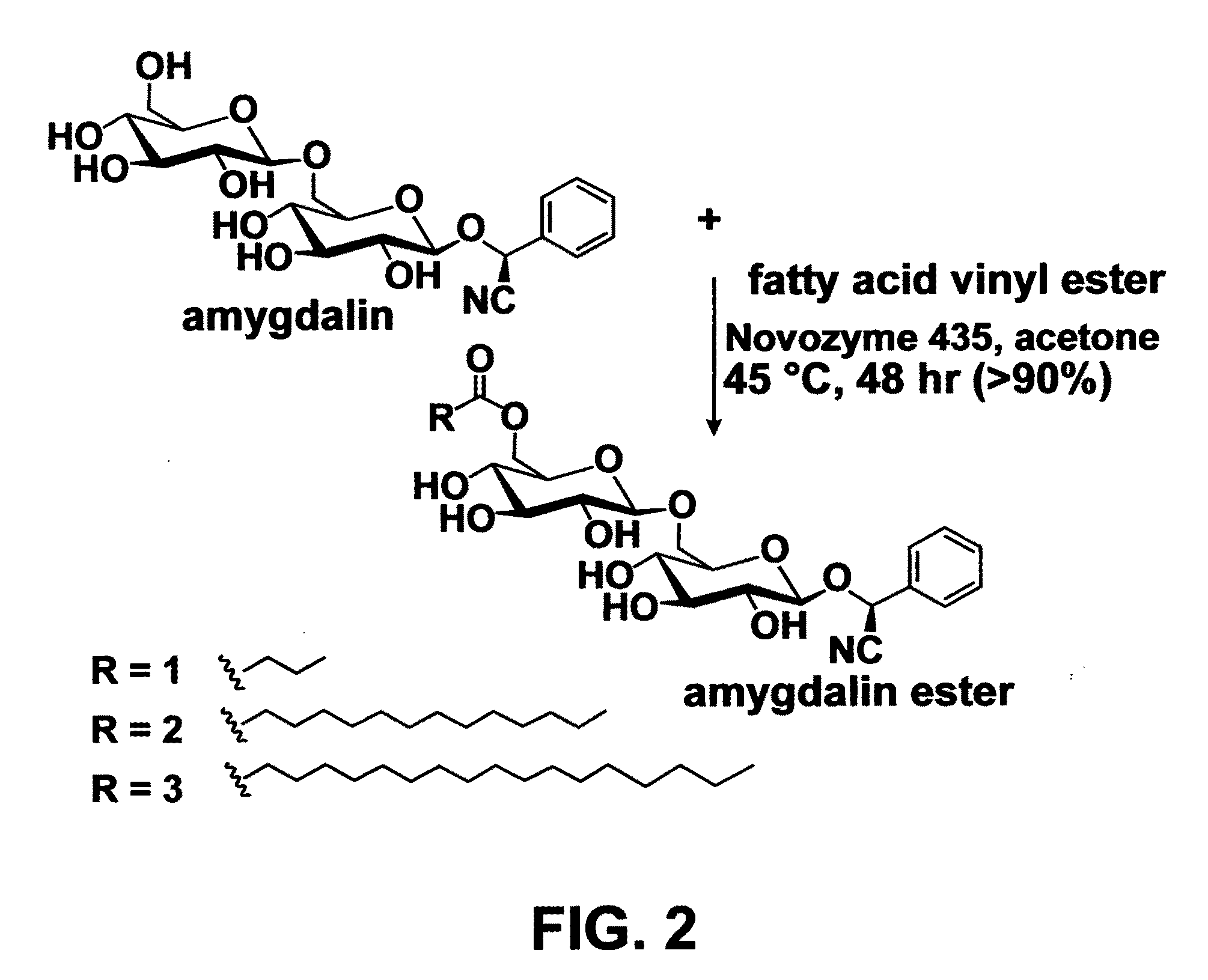Method for preparing hydro/organo gelators from disaccharide sugars by biocatalysis and their use in enzyme-triggered drug delivery
a technology of disaccharide sugar and hydro/organo gelator, which is applied in the field of hydro/organo gelator, can solve the problems of limited reports on easily achievable and efficient low-molecular weight gelators, inability to ignore potential disadvantages, and inability to meet the requirements of biocompatibility of materials used,
- Summary
- Abstract
- Description
- Claims
- Application Information
AI Technical Summary
Benefits of technology
Problems solved by technology
Method used
Image
Examples
Embodiment Construction
Synthesis of Hydrogelators by Enzyme Catalysis
[0035]By taking advantage of the supreme control on regioselectivity of enzyme catalysis, a series of amygdalin derivatives were made where selectively introduced acyl moiety on primary hydroxyl group gave excellent yields.
[0036]Amygdalin is a disaccharide containing one primary hydroxyl group that forms ester bonds with fatty acids. Vinyl esters were used as acyl donors. The detailed synthesis procedures are shown in the METHODS section below and the synthetic route to the amphiphilic amygdalin derivatives is shown FIG. 2.
[0037]In general, multi-step synthesis, arduous separation procedures, and lower yields often keep low-molecular-weight gelators away from commercial use due to high production cost.16 Strikingly, the hydrogelators of the present invention were synthesized from renewable resources in a single-step process in high yields (>90%), and unpurified crude products showed unprecedented gelation abilities like their counter pur...
PUM
| Property | Measurement | Unit |
|---|---|---|
| width | aaaaa | aaaaa |
| width | aaaaa | aaaaa |
| molecular length | aaaaa | aaaaa |
Abstract
Description
Claims
Application Information
 Login to View More
Login to View More - R&D
- Intellectual Property
- Life Sciences
- Materials
- Tech Scout
- Unparalleled Data Quality
- Higher Quality Content
- 60% Fewer Hallucinations
Browse by: Latest US Patents, China's latest patents, Technical Efficacy Thesaurus, Application Domain, Technology Topic, Popular Technical Reports.
© 2025 PatSnap. All rights reserved.Legal|Privacy policy|Modern Slavery Act Transparency Statement|Sitemap|About US| Contact US: help@patsnap.com



